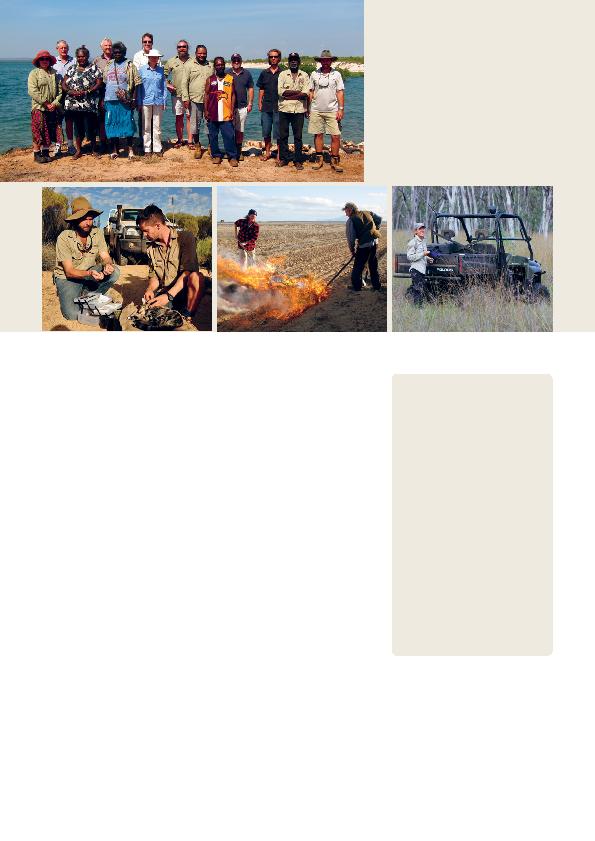
with Bush Heritage, is currently undertaking
ecological research into predator-prey
dynamics on Charles Darwin Reserve.
50 volunteers over the past 18 months
to monitor the diversity and abundance
of small mammals and reptiles on the
reserve. A major component of this research
involves testing EradiCat poison baits for
the integrated control of foxes, feral cats
and wild dogs. In 201314, 1200 EradiCat
baits will be distributed along a network
of management tracks covering an area of
20 000 hectares. Numbers of cats, foxes and
wild dogs will be monitored using 40 remote
cameras equipped with motion sensors and
infrared flash, and sand pads in which the
predators leave their signature paw prints.
their movements and the size of their home
ranges. Fourteen feral cats have been caught
and fitted with state-of-the-art GPS collars.
Information gathered from the collars will
improve our understanding and management
of the feral cat population and also inform
our strategies for protecting native fauna.
It is expected that this important research
will improve our long-term management of
feral animals and help ensure our precious
native wildlife is given the best chance of
survival into the future.
and internationally in the use of the Open
Standard for the Practice of Conservation,
a planning and adaptive management
methodology underpinned by the
information management system Miradi.
by conservation planners and practitioners
to determine what to protect, where, how
and when to work, who will undertake
the tasks, what resources and equipment
they will need and how much it will cost.
Monitoring, analysing data, reporting and
adapting are key elements of the ongoing
process. Healthy Country Planning, which
is used by Indigenous communities around
The Open Standard is now well integrated
into Bush Heritage business practice and
has significantly improved our efficiency
and effectiveness.
working group at the forefront of improving
the design, useability and functionality of the
Miradi software through the development
of `Miradi Share'. This is a web-based `cloud'
that will allow exchange of conservation
project information around the world and
build a network of people and a repository
of knowledge focused on protecting the
natural world. Bush Heritage is proud to
be playing a key role in this initiative.
at Carnarvon Station Reserve
AndyInc Scholarship, PhD student
Emma Burgess from the University of
Queensland is focusing her research
on fire management in the subtropical
landscapes of Carnarvon Station
Reserve. Her study is investigating
the effectiveness of mosaic burning
to bolster and perhaps increase the
diversity and density of small birds
across the reserve.
in shrubs resulting from cool burns
that benefits the birds, rather than
the patchy structure of vegetation in
areas of burnt and unburnt country.
This study and a broader review of fire
management strategies will help guide
the future management of fire on the
reserve and also in the region.
out on country at Gaambemirri, West Bay, WA.
Photograph by Stuart Cowell
(left) and researcher Tim Doherty attach a radio
collar, Charles Darwin Reserve, WA.
Photograph by Jo Krawiec
Smale (left) burning seed-laden vegetation to
stimulate germination. Photograph by Jane Thompson
Station Reserve, Qld. Photograph by Donna Oliver